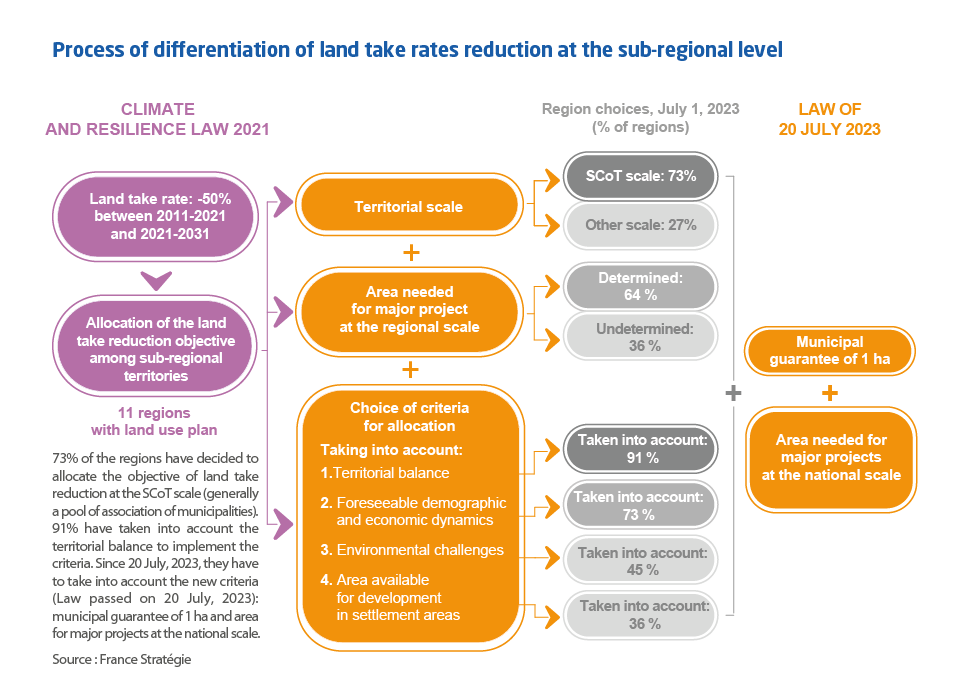
This “no net land take” target has triggered a vigorous debate. Indeed, the challenge is to allocate a more scarce land resource to different public policies, all legitimates: building housing, developing new economic activities, maintaining agricultural activity, building transport infrastructure, preserving natural spaces, etc. The objective of land take reduction by 50% seems to be achievable at the national level for two main reasons. First, we estimate that the lower demographic pressure will result in 17% decrease of land consumption for housing from 2021 to 2031. Second, an improvement of land take efficiency would have reduced total land take of about 26% in the past decade. Nevertheless, it would be more complicated at the regional scale due to the high spatial heterogeneity in land consumption.
We performed a first assessment of regional strategies in mid-2023. All regions have made choices, notably related to the scale of allocation, the identification of major projects pooled at the regional scale, and the definition of criteria for differentiating rates of land take reduction. Most regions have sought a compromise between the prolongation of past trends, a representation of acceptable or desirable futures, and a form of territorial balance. The range of reduction rates among sub-regional territories can be significant: 10 points around the average of 50%.
However, these first choices might need to be updated to incorporate the new goals of the law of 20 July 2023, particularly the guarantee of 1 ha minimum for each municipality and the contribution of each region for national-scale projects.











